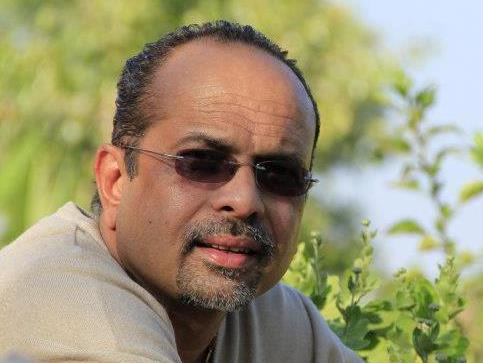
By Nivedan Sahani
Is the digital information world good for us? The information exchange and availability are getting wireless and the information format is getting smaller in size day by day which enables us to get it anywhere & anytime.
If we take the opinion about the digital information impact on our social life, we always get a mixed reaction and diversified opinion to reach at a definite answer.
Digital information with right channel of distribution to right audience can be more powerful than a nuclear weapon, be it Afghanistan war against terror, Anna?s first protest at Ramlila Ground in New Delhi, revolution in Egypt or killing of Bin Laden, in all these instances or events digital information have played an important part for success but in the same time if we look at DPS MMS clip, recent north eastern citizen exodus or use of cell phone as a remote control of bomb blast is part of the ugly face of digital information adoptability by our society.
Digital Information is gradually taking the shape of a virtual mammoth not in terms of physical size. The storage capacities have been increasing but the sizes of the storage physical dimensions are getting smaller; the equipment?s related to digital information?s systems are also getting smaller.
The Digital Information System along with tiny access devices have started impacting our professional & social life, in urban society these two factors (information & access device) have beaten addictions of Cocaine, we just can?t live without it.
The government should come up with a different framework to make use of this information by various sectors in our society, which would impact the life of a common citizen.
Federal Systems in every country should take up the role of a pathfinder of positive uses of information for their citizen and this can be possible if the definitions of the framework are made with clear vision and objective along with transparency.
Indian Scenario
In a country like India where we are the second largest population in the world with more than 14 different official languages used by the state provisions, it is tough task for our Federal Systems to play the role of pathfinder for channelizing the information for betterment of the citizen life but it is not an impossible task if we do a little bit re-thinking of our approach.
Let us do a quick reality check of our national ICT footprint:
? 700+ million mobile users
? Internet penetration and growth touched double digit
? Investment to set up Information Kiosk under PPP model name as Common Service Center.
? More than 10 TSP with national operating license
? Government investment in State Wide Area Network
? Investments to build state owned Data Center.
? Heavy subsidy to government owned TSP
? Ear Mark fund to improve rural network under USO funding.
? Indian Mobile handset manufacturers joined the top brand-manufacturing club.
? Tariff rate touched the lowest level
It is the prefect landscape for Digital Information Systems in India, then why we are still far behind from the world threshold mark on adoption and deployment of Digital Information Systems. There might be multiple reasons for this but only one component is the biggest contributor for lagging behind in the ranking scale.
? The clear vision and road map of digital infrastructure along with availability of the digital information
Challenges
There are major gaps in our approach of deployment infrastructure along with access of digital information and we all know the sunrise to sunset in technology evolution cycle have reduced from 24 months to less than 9 months (support is not taken into consideration) and in our federal systems starting from participation in a RFP till handing over the project is approximately 12 months to 16 months in most of our IT infrastructure investment projects, when we are ready with infrastructure to use digital information as per the defined framework the technologies used to build the infrastructures are already moving towards the sunset and we live with patches and after sales support, which deprived us from taking the full advantage of the deployed infra as desired in the RFP.
This happens as most of our authorities work in silo and consultants appointed to design the RFP have least of the knowledge of how our federal systems works and the factor is our state governments also have their view on the suggested deployment plan. In short we don?t have a bird?s eye view or a planed approached with complete onus from a single agency about these heavy funded project. In many cases I have seen our political system forcing our decision makers (IAS) not to go aggressive on right selections and deployment process, this is another bottleneck in our federal system.
Just to give an example, how we have deployed our infrastructures to access the digital information, I am herewith highlighting our sequential approach:
? Setup vertical SWAN (state wide area network)
? We select the service providers for bandwidth
? We fund to setup CSC under PPP
? We set up data center
? Setup of Horizontal SWAN
? Departmental application readiness ? NOT KNOWN
The objectives are clear but the sequences of deployments have to change to achieve the technological advantage and benefit for the citizen.
In India for many reasons we have never been able to create a best practice approach, which can be replicated, it doesn?t mean we are not capable of creating those best practices but because of our multi dimensional bureaucratic approach we failed to adopt the best practice and get it replicated.
If we look at PDS system in India, we are clear on our objective that we want to pass on the benefits to BPL family and to control the pilferages of food grains but the adoption of ICT to achieve our objective are many, biometric, smartcard and coupon base authentication and we are still struggling to achieve our objective on government lead PDS nativities. The same is with law & enforcement technologies deployments, we have defined various models BOOT, BOO & PPP to achieve our objective and nerve replicated the successful model running in few states.
In my opinion we should have ONE PRACTISE rather than BEST PRACTISE to adopt and replicate.
Government Role
The government has to play a vital/ critical role by defining the framework to create ONE PRACTISE for adoption with clear cut identification of the applications and developed it in local language and host it in a cloud.
The cloud services can have two flavors ? PUBLIC? and ?PRIVATE?. The control of the database and application should be with single point authority with administrative right to respective states government to do the changes to suit their administrative requirement. All G2C services should be hosted in ?PUBLIC? cloud and all G2G services should hosted in ?PRIVATE? cloud and these two clouds need to be integrated with a Mobile Service Delivery Platform ? MSDP to make the application available for mobile users of their choice of language. This should be the foundations or starting points of our Digital Information Framework. We can develop different business building blocks around these three pillars with complete administrative control of government agencies with granular details of analysis report.
The users can use any medium to access the data as per their requirement from anywhere and everywhere. The infrastructure can be built up with latest equipment ready for access as plug & play.
We need to build Digital Bharat and that can only be possible if we have better control over the information, create ? ONE PRACTISE? and deliver through Internet and Mobile, this will change the face of India and bring in transparency to build a true Digital Information Systems.







